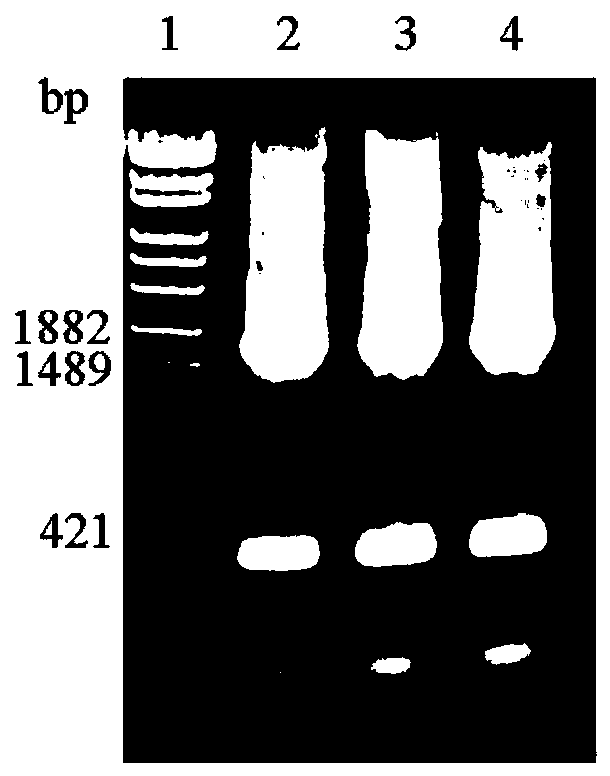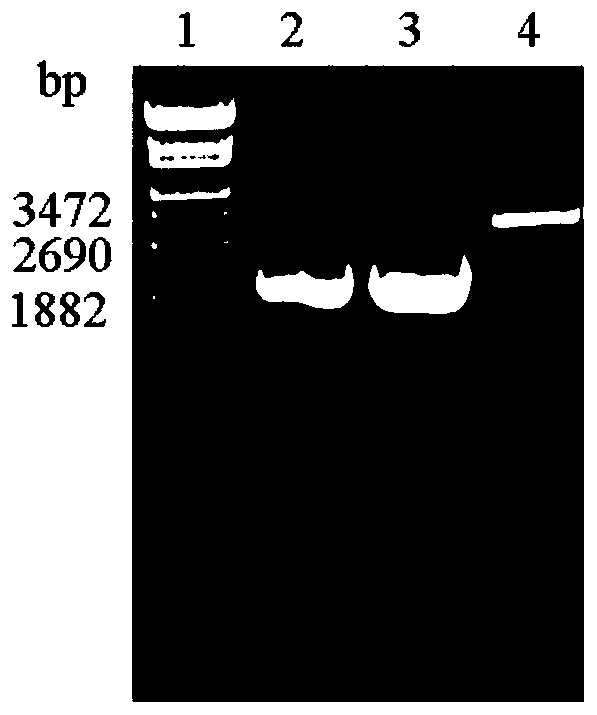Application of glms gene in biosafety screening marker for lactic acid bacteria
A biosafety and screening marker technology, which is applied in the application field of glms gene in lactic acid bacteria biosafety screening markers, can solve the problems of large biological safety and hidden dangers, and achieve the effect of easy cloning, low cost and realization of homologous recombination
- Summary
- Abstract
- Description
- Claims
- Application Information
AI Technical Summary
Problems solved by technology
Method used
Image
Examples
Embodiment Construction
[0044] The present invention will be further described below in conjunction with specific examples.
[0045] The source of the expression vector pUCERY: pUC19 is a laboratory-preserved plasmid, which was cloned and transformed to obtain pUCERY.
[0046] Example Construction of the glms gene-deficient strain of Lactococcus lactis L.lactis NZ9700
[0047] 1. Extraction and detection of genomic DNA of Lactococcus lactis
[0048] According to the literature (Ausubel F.M., Brent R.and Kingston R.E, et al.Short ProtocolsIn Molecular Biology.3rd ed.John Wiley&Sons, Inc., 1995), the Lactococcus lactis genomic DNA was extracted, and the specific process was as follows:
[0049] Cultivate 5ml of Lactococcus lactis bacteria solution to saturation, take 1.5ml of the bacteria solution and centrifuge for 2min; add 567μl of TE buffer to the precipitate, resuspend it by pipetting repeatedly, add 30μl of 10% SDS and 3μl of 20mg / ml Proteinase K, mix well, and incubate at 37°C for 1h; add 100μ...
PUM
 Login to View More
Login to View More Abstract
Description
Claims
Application Information
 Login to View More
Login to View More - R&D
- Intellectual Property
- Life Sciences
- Materials
- Tech Scout
- Unparalleled Data Quality
- Higher Quality Content
- 60% Fewer Hallucinations
Browse by: Latest US Patents, China's latest patents, Technical Efficacy Thesaurus, Application Domain, Technology Topic, Popular Technical Reports.
© 2025 PatSnap. All rights reserved.Legal|Privacy policy|Modern Slavery Act Transparency Statement|Sitemap|About US| Contact US: help@patsnap.com



